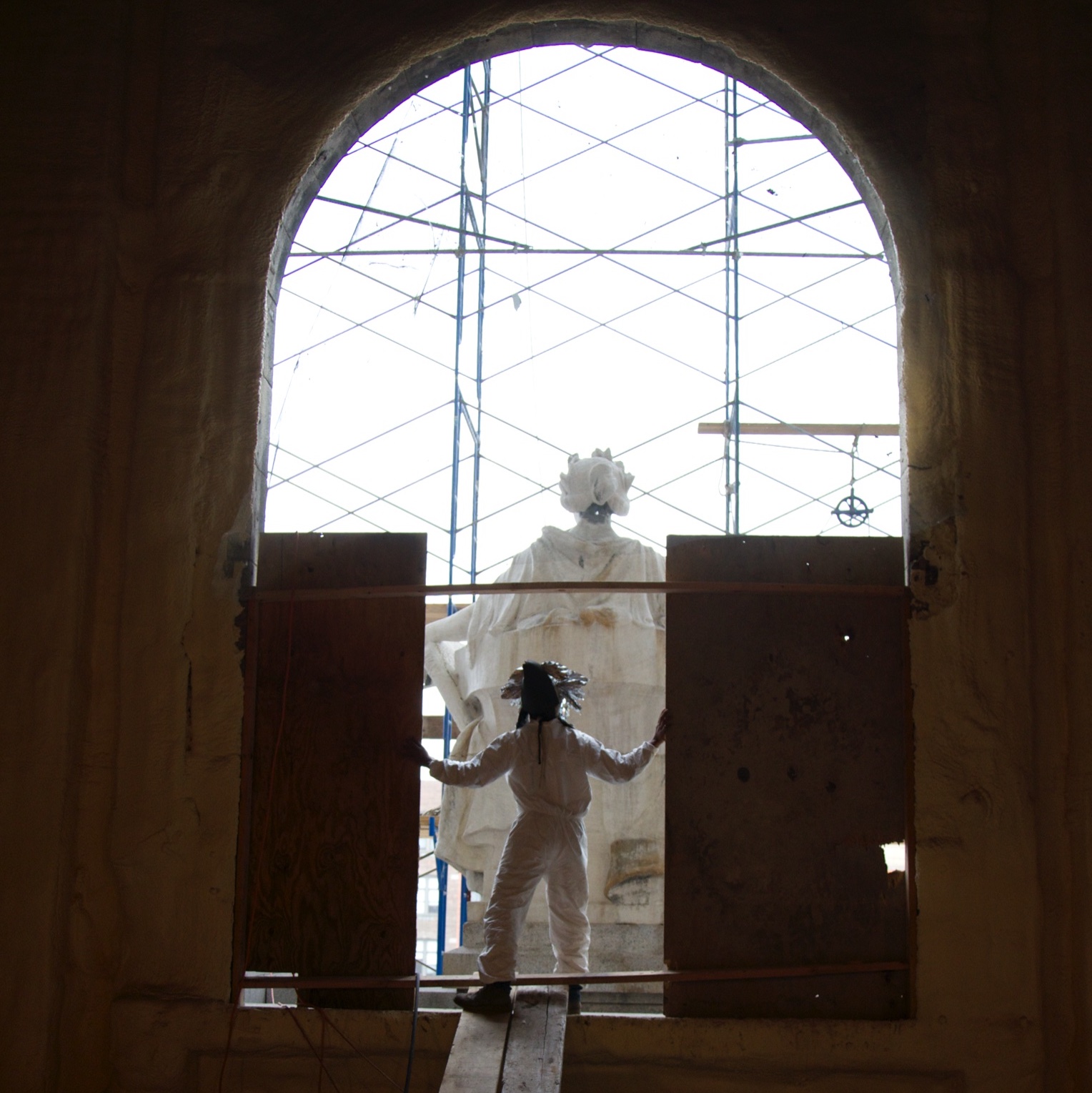so that the mind and body may think differently
so that the mind and body may feel, and move
new language
we begin with a word that must be removed
omitted moving forward so that we may ask different questions of our work and of our seeing.
To visualize complex structures of systemic bias and criminalization, we must first discern how bodies are contained. Words may prevent a proximity to these bodies, burying them underneath terms.
Words are slippery and scandalous, bastards even at times
We must first attempt to examine how criminal is where crime and punishment meet—the term itself a replacement for our desire to be separated from the undesirable, however deemed. How it is easier to codify a body as criminal only when we have allowed ourselves to believe that crime and punishment may only be located in someone else’s body// in some other’s body.
But what of a hand, as it is gently placed over another? Does the prison waiting room still detract from that moment of tenderness?
Or what of an outstretched hand as it extends toward an empty chair or rests on a slumped shoulder in need? Do we see or do we allow ourselves to see abandonment and loneliness if covered in the shell of a prison? Can we still conjure up love within these walls?
The narrative of criminal has a way of slipping into the most quiet, innocent of moments, particularly when black and brown bodies are thrown sharply upon such an environment. But the body still finds a way of betraying such entrenched bias. A careful study of gesture tells us that these places, whether they be the court’s, jail’s, schools, hospitals or any other space warehousing bodies, are lying to us. The criminal justice system relies on our belief that it must be imposed in order to enact rehabilitation—another term that in and of itself is a lie when it seems evident that to imprison is to punish—to remove, not restore, what little humanity we permit ourselves to see in the marked body. But a hand will still open with grace or grip with tension no matter what closes upon its body. A bend in the neck, a light step in a direction, a short gaze, a straightened spine, an arched eyebrow, an ever so slightly opened mouth… tell us something language cannot. Within these gestures the term, criminal, dissolves so that we may see ourselves in a body, their bodies, no matter how contained, restricted, or controlled. A body in multiplicity.
This project is an exercise in seeing more clearly… in moving more closely to one another to see how our bodies may convey a certain truth. That even in containment the body can express beauty.
We have used performance to strip down personal stories to a language before sound, before utterance—sometimes the most essential elements reside there. At times we feel concretized in our words, our labels, our understanding of things, we are trying to understand things through the words we attach to them. And oh, how much it limits us.
So we begin with a word which must be removed.

